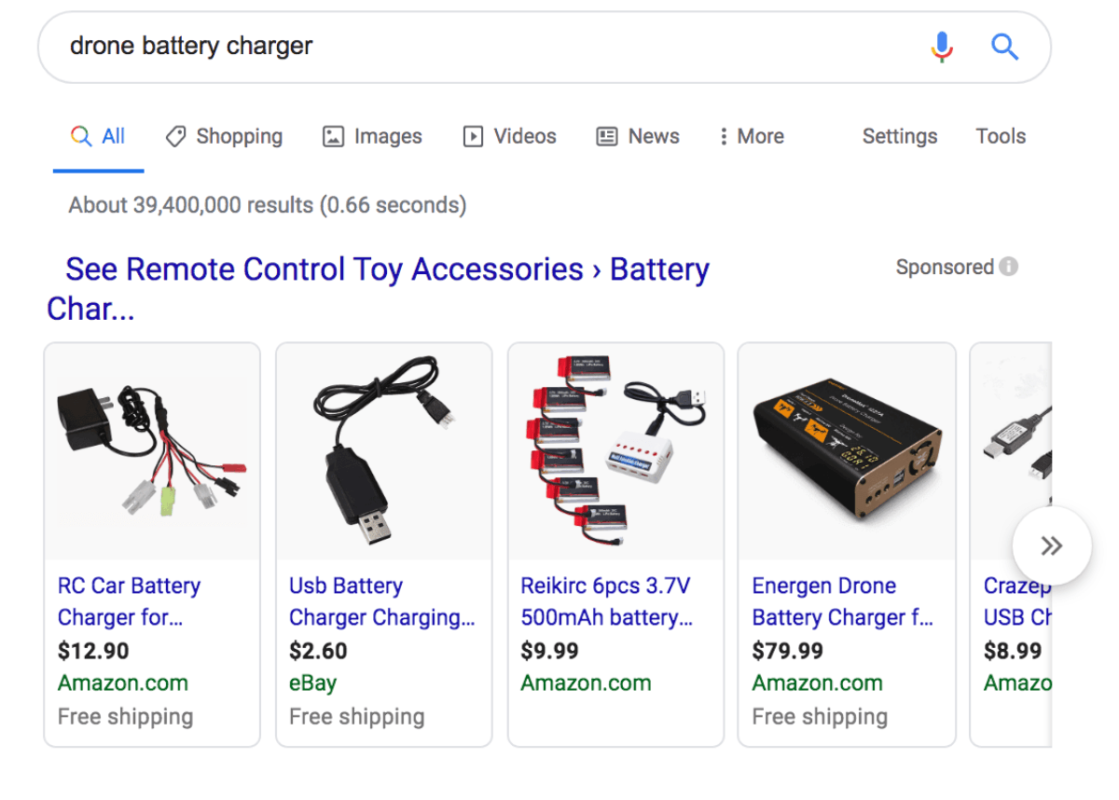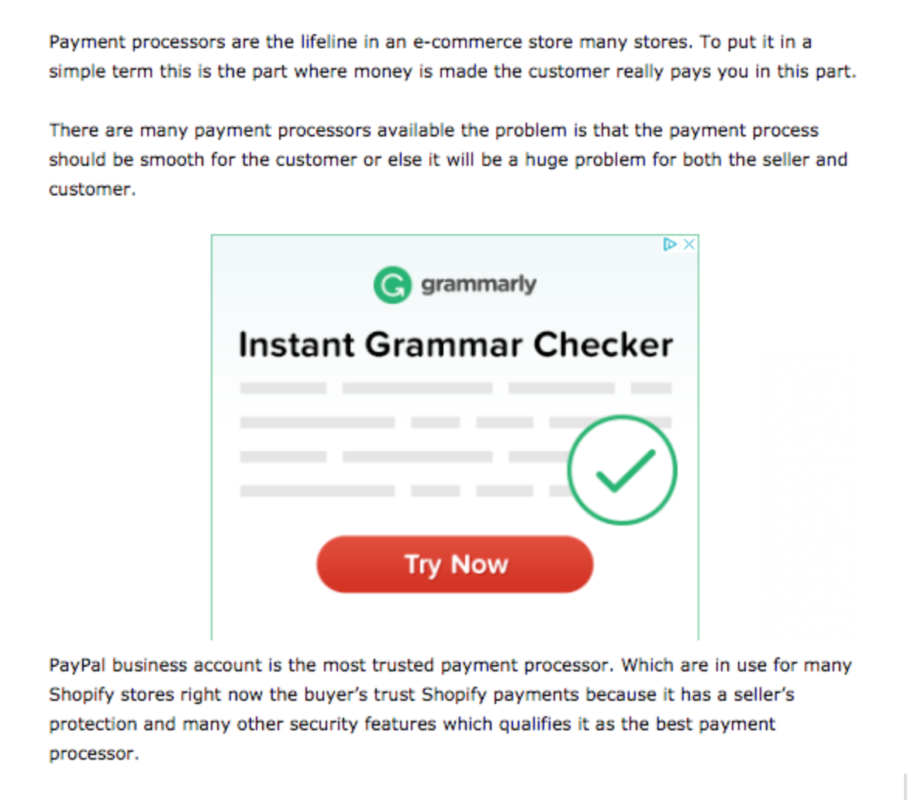There is a whole world of traffic outside of Facebook that many Dropshippers tend to miss out on.
Don’t get me wrong Facebook is an amazing traffic source and one that is not going to be going away anytime soon, however it is certainly NOT the only game in town and depending on the type of e-commerce store you are running and the products being sold, places like Google Ads can oftentimes drive better results. So let’s dive into how to effectively use Google Ads for dropshipping.
If you’ve never used Google Ads before it is important that you understand there is going to be a pretty big learning curve. Compared to Facebook, in my opinion the Google Ads platform is much more robust. Largely due to the ability to access many different channels.
From a single Google Ads account you can create advertisements that run on Google Search, the Google Display Network (GDN), Youtube Ads, Google Shopping Campaigns and even Gmail Campaigns that show up only in people’s inboxes.
If you’re like most people you probably felt your anxiety kicking in as you read that last sentence, but have no fear. Below I’m going to outline several strategies that’ll put you on the right track for using Google Ads for dropshipping effectively.
Getting Started With Google Ads For Dropshipping
Before getting started on Google Ads it’s vitally important that you first set up and install the Google Remarketing pixel on your website. You are also going to want to have Conversion Tracking setup as well.
I’m not going to go in-depth on how to do these things as it’s beyond the scope of this article but here are some links from Google’s own help center on the subject if you do not have this already setup.
👉 Tag your site for remarketing
👉 Set up conversion tracking for your website
It’s also crucial that after you setup the Google Remarketing tag on your site that you create the necessary remarketing lists/audiences in the Google Audience Manager.
Here’s a quick video I made outlining the Google Audience Manager and creating the proper Remarketing Lists.
1. Google Shopping
For dropshippers and e-commerce stores specifically, Google has a specific campaign type called Google Shopping. In my opinion this is probably the easiest and quickest type of campaign to get started with if you own an e-commerce store with lots of different products in it.
In order to get started using it you’ll need to first set up a Google Merchant Center account and create categorized product feeds for all the items on your store. The beauty of Google Shopping campaigns is that you don’t have to create any ads as Google just pulls the data (image and headline) needed straight from the actual product listing in your Merchant Center account.
When Google serves the ad to a potential customer they will look like this…

As far as setting up the campaign there are several different ways you can target them, but getting started I’d recommend you start by going after remarketing lists first and foremost. By only running shopping campaigns to people who have previously visited your site you’ll have a much greater chance of getting people who visited but left without purchasing to come back and finish what they started.
It’s not uncommon at all for someone to visit your site, browse around but then leave and head over to Google to do some research first before making a buying decision. Running your shopping campaigns to your remarketing lists ensures you stay top-of-mind for your potential customers. Those who do see you again and click to revisit will be much more likely to buy this time around.
Of course there is much, much more you can do with Google Shopping campaigns, but that could be an entire article or series of articles just on its own. I wanted to give you a simple yet effective strategy to get going and start seeing some results quickly.
If you’d like to really go deep into all that you can do with Google Shopping campaigns I’d suggest you check this out…
👉 The Complete Google Shopping Ads Guide For 2019
2. Branded Search Campaigns
Another simple yet very effective type of Google Ads campaign you should be running is a Branded Search Campaign. This is a campaign where you literally bid on your own Branded terms. Things like your company / website name and variations of it.
For example, let’s say your site’s name was “Awesome Blue Widgets”. At the very least you would want to bid on the following search terms:
Awesome Blue Widgets
Awesome Blue Widgets Reviews
There are other variations you could add in there over time but by bidding on those in Broad Match, Phrase Match and Exact Match forms you are certain to make sure that your brand is prominently being displayed for anyone who is searching for it on Google.
If you don’t yet understand what I mean about the different match types available give this a quick read…
👉About keyword matching options
If you’re new to all of this you might be thinking… “Why would I bid and pay to run ads on my own branded search terms when my site should already be showing up in the organic search results?” That is a perfectly valid question and the main reason behind doing this is 3 fold.
- First, you want to secure as much virtual estate as you can for your brand. Having an ad and an organic listing running at the same time simply takes up more of the available google listings with your site, ensuring you dominate the page when people are looking for something related to your brand name.
- Second, by bidding on broad and phrase matched terms you’ll begin to see all the things that people actually type into Google related to your brand name. This raw search data which you’ll find in the search terms report can help you get an idea of what people really want to know about your brand. You can then address these things in your site and marketing messages. You simply will not get that data relying only on organic.
- If you're not bidding on your own terms most likely your competitors will. Since Google Search ads almost always show above the organic results if your not bidding on your own branded terms it would be very easy for any competitor to take the #1 spot on the page and steal some of your traffic.
3. Competitor Search Campaigns
As I mentioned, competitors can bid on your branded search terms to show ads when people are really looking for you. So guess what!?! … You are going to do the same thing.
If you know who your competitors are there is no reason you shouldn’t be creating separate campaigns to bid on their branded terms and siphoning their potential customers over to your store instead.
These are oftentimes great clicks to go after because if they are searching for your competitor it’s very likely they are already in-market for what you have to offer as well. It’s sort of like remarketing to your competitor's list… LOL!
4. Google Display Campaigns (Remarketing)
Oh… the Google Display Network (GDN)
The GDN is probably the most intimidating and many times misunderstood campaign type you can go after from your Google Ads account. Unlike Google Search campaigns, where you are bidding on actual keyword terms that people are searching for, the GDN is a collection of Display or Banner ads across a vast network of thousands of different sites that are partnered with Google.
Display ads by nature are “interruption” marketing meaning that the person seeing the ad is not looking for it, it’s just there on whatever site they are currently looking at similar to how a billboard is just there on the side of the highway as you are driving along.
An example of how they typically are displayed to the end-user is like this ad from Grammarly…

The way I suggest you get started with running ads on the Google Display Network is to only use it for Remarketing campaigns. Trying to go after new cold traffic that has never heard of or seen your site or products before is a really good way to spend a lot of money with no results.
Please trust me on this…
…. I have learned hard from that mistake more than once.
By utilizing the GDN for your Remarketing campaigns at least you can be sure you are showing your ad to a real person who has already been to your site and when they see your banner ad following them around the internet they will be way more likely to click it and hopefully finish that purchase!
Examples of Remarketing ads you might want to try would be something like giving them a coupon code for 10% off or a simple message like “You Forgot Something!”.
Just make sure to not follow them around FOREVER! Create your remarketing audiences so they only follow people around for a couple of weeks and you're not wasting money showing ads to people 2 months later who still don’t want to purchase and are now just annoyed with always seeing your ads.
5. Dynamic Remarketing Campaigns (GDN)
Dynamic Remarketing campaigns make use of Google’s Dynamic Product Listing ads feature. Dynamic Product Listing ads are what you already use in Google Shopping campaigns but in this case you are making use of them on the Display Network instead. Just like with Google Shopping campaigns, in order to effectively use them, you have to have a Google Merchant account already set up with product feeds from your website.
Like any other remarketing campaign the point of these is to show ads on the Display network to people who have already visited your site. What’s different however is that Google will actually show them the products that they viewed while on your site. If you have used Facebook’s Dynamic Product Ads for remarketing before this is the same principle.
For a detailed explanation on how to set one of these bad boys up check out this article from the Google Help section…
👉Create a dynamic remarketing campaign
Conclusion
There are several other campaign strategies I could list above, but in an effort to not overwhelm you I didn’t feel this was the time to delve into them. The 5 listed above are more than enough to get you effectively using Google Ads for your e-commerce business.
Also, please don’t think that you have to do all of these to start getting results.
YOU DON’T!
Although I think you’ll want to incorporate most of them eventually it’s important to just pick one or 2 at the most to get started with and just focus on making them successful campaigns before implementing any of the others.
Lastly, I wanted to leave you with the video below that goes over a few advanced tricks and hidden settings within the Google Ads platform that can really help you campaigns be more successful. Most people never take the time to figure out or look at this kind of stuff, but it can be very important when it comes to optimizing your Google Ad campaigns for maximum profit.




Hi,
I read on the google’s community forum that Drop-shipping businesses are not allowed to run shopping campaigns or have a merchant center. Do you have any info about this ? I would appreciate you answer.
Thank you
Hi there,
Unfortunately, we don’t have any info on that. I’d advise you to look into Google’s policy on that yourself to find out more about it.
Great deals of important information and the article are great. I am bookmarking it for future reference and consultation. Many thanks for sharing!